#usecase
Explore tagged Tumblr posts
Text
Top Use Cases to Import Box to Google Workspace in 2025
0 notes
Text
10 Surprising Examples of Positive and Negative Correlation in Everyday Life
Understanding correlations can provide valuable insights into how different variables interact in our daily lives. Positive correlation means that as one variable increases, so does the other, while negative correlation means that as one variable increases, the other decreases. Here are ten surprising examples of positive and negative correlations you can observe in everyday life.
10 Examples of Positive and Negative Correlation in Everyday Life:
Positive Correlations
1. Exercise and Health There is a well-documented positive correlation between regular exercise and overall health. As the amount of exercise increases, indicators of good health, such as cardiovascular fitness and mental well-being, also improve. - Physical Benefits: Regular exercise leads to improved cardiovascular health, stronger muscles, and better endurance. - Mental Benefits: Exercise is linked to enhanced mood, reduced stress, and lower rates of depression and anxiety. 2. Education and Income A positive correlation exists between the level of education and income. Generally, as individuals attain higher levels of education, their potential to earn a higher income increases. - Higher Degrees: Individuals with advanced degrees often secure better-paying jobs. - Job Opportunities: Education opens up more job opportunities in specialized fields. 3. Work Hours and Productivity Within reasonable limits, there is a positive correlation between the number of hours worked and productivity. Employees who work more hours tend to complete more tasks and projects. - Output: Increased work hours lead to higher output and completion of projects. - Skill Development: More time spent working can lead to better skills and expertise. 4. Sleep Quality and Cognitive Function Quality sleep is positively correlated with cognitive function. Individuals who get adequate, restful sleep perform better on tasks requiring attention, memory, and problem-solving skills. - Memory: Good sleep enhances memory consolidation. - Problem-Solving: Adequate rest improves creative and analytical thinking. 5. Healthy Diet and Longevity Eating a healthy diet rich in fruits, vegetables, and whole grains is positively correlated with longevity. Individuals who maintain a nutritious diet tend to live longer and healthier lives. - Nutritional Intake: Balanced diets provide essential nutrients that support overall health. - Disease Prevention: Healthy eating habits reduce the risk of chronic diseases such as diabetes and heart disease. If you want to know more about Positive and Negative correlations, Read this Post
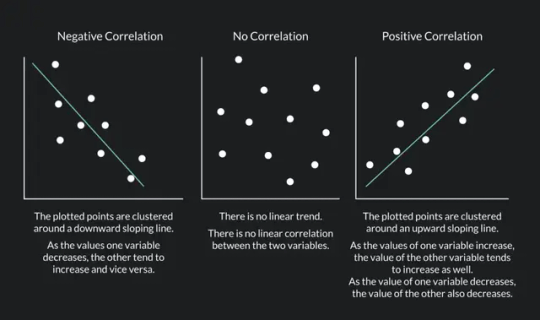
10 Surprising Examples of Positive and Negative Correlation in Everyday Life
Examples of Positive and Negative Correlation: Negative Correlations
6. Stress and Immune Function There is a negative correlation between stress levels and immune function. As stress levels increase, the body’s immune response weakens, making individuals more susceptible to illnesses. - Immune Response: High stress can suppress the immune system, reducing its effectiveness. - Health Implications: Chronic stress can lead to more frequent infections and slower recovery times. 7. Screen Time and Physical Activity Increased screen time is negatively correlated with physical activity levels. As individuals spend more time on screens (e.g., computers, smartphones, televisions), they tend to engage in less physical activity. - Sedentary Behavior: More screen time often leads to a sedentary lifestyle. - Physical Health: Reduced physical activity is associated with weight gain and decreased fitness. 8. Pollution Levels and Air Quality Pollution levels have a negative correlation with air quality. As pollution increases, the quality of the air we breathe decreases, leading to various health issues. - Respiratory Health: Poor air quality can exacerbate respiratory conditions like asthma. - Environmental Impact: High pollution levels contribute to environmental degradation. 9. Alcohol Consumption and Academic Performance Higher levels of alcohol consumption are negatively correlated with academic performance. Students who frequently consume alcohol tend to have lower grades and academic achievement. - Focus and Concentration: Alcohol impairs cognitive functions, affecting the ability to concentrate and learn. - Time Management: Excessive drinking often leads to poor time management and less study time. 10. Debt Levels and Financial Stability There is a negative correlation between high levels of personal debt and financial stability. As debt increases, financial stability decreases, leading to stress and financial insecurity. - Financial Stress: High debt levels cause significant financial stress and anxiety. - Savings and Investments: Increased debt limits the ability to save and invest for the future.
Understanding Correlation in Everyday Life
Understanding the correlations between different variables can help us make better decisions and improve our lives. Whether it’s recognizing the benefits of positive correlations or mitigating the risks associated with negative correlations, awareness is key. Applications of Correlation - Health: Recognizing the positive correlation between exercise and health can motivate individuals to adopt a more active lifestyle. - Education: Understanding the link between education and income can encourage investment in education. - Work-Life Balance: Awareness of the negative correlation between stress and immune function can highlight the importance of stress management. Practical Tips - Exercise Regularly: Aim for at least 150 minutes of moderate exercise each week to improve health. - Prioritize Sleep: Ensure 7-9 hours of quality sleep each night to boost cognitive function. - Manage Stress: Practice stress-relief techniques such as meditation, deep breathing, and regular breaks. - Healthy Eating: Incorporate more fruits, vegetables, and whole grains into your diet. - Limit Screen Time: Set boundaries for screen use to increase physical activity.
Conclusion
Correlations, both positive and negative, are a fundamental aspect of our daily lives. By these 10 Surprising Examples of Positive and Negative Correlation in Everyday Life, you will be able to understand and leverage these relationships, we can make informed choices that enhance our health, productivity, and overall well-being. This comprehensive overview and examples of positive and negative correlations in everyday life provide valuable insights and practical tips to help you navigate and optimize these relationships effectively. Read the full article
0 notes
Text
Epic Design Fails in Movies #day2
Harry Potter - The Triwizard Maze What's the fail? A maze with no clear path or exit signs! Design Lesson: User-friendly navigation is key!
Mazes are supposed to be confusing and create difficult navigation. Still, the humour is used to point out the user's frustration when the navigation is unclear and they end up feeling like they are in a maze with no clear exits/next steps or a recurring loop of interrupted patterns that makes a user journey difficult.

1 note
·
View note
Text
Use Case là gì? Tìm hiểu về sơ đồ Use Case từ A đến Z
Nắm rõ Use Case là gì sẽ giúp các chuyên viên Business Analyst xác định chính xác nhu cầu của người dùng đối với sản phẩm của mình, từ đó đưa ra những giải pháp cải tiến hiệu quả nhất. Xem thêm: https://topchuyengia.vn/tu-van/use-case-la-gi
0 notes
Text
+ AI tools are constantly "6 months" from really getting awesome • Birchtree
AI use cases aren't here yet and I predict it's not even 6 months away. #ai #llm #tech
A challenge these A.I. tools have is that we’re coming down from the novelty high we had at the launch of ChatGPT a year and a half ago and now they need to deliver on actual use cases that make people’s lives better. As someone who uses Claude almost everyday, I think there’s clearly something there, but the big promises from these companies feel like they’re constantly falling short of those…
View On WordPress
0 notes
Text
Tech giants like IBM and Deloitte is doing this to improve overall testing efficiency!!
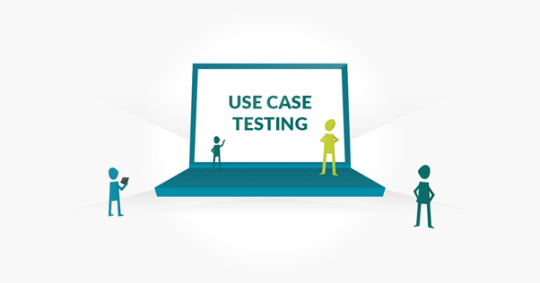
In the ever-evolving world of software development, increasing the power of testing is essential. From large technology companies like Deloitte and IBM to startups and small IT companies, everyone wants to optimize their testing efficiency. A common strategy that everyone follows to achieve this is use case testing. Usecase testing has proven to be a very successful method of improving software testing efficiency. In this approach, many instances of the system are selected and tested individually to see if it works as expected. This article explains the benefits of use case testing, its implementation, best practices, and how it impacts test efficiency.
Software testing is considered one of the most important parts of the Software Development Life Cycle (SDLC). This makes the product very reliable and easy to use. However, testing is expensive and time-consuming, especially when there are many use cases to consider. Following use case testing is a great way to simplify the entire testing process and increase productivity and efficiency.
What is use case testing?
Use Case testing is a functional testing technique that defines test scenarios based on transactions and covers the entire system from start to finish. It is used to identify areas in a software application that cannot be detected by testing a software component. A use case is an interaction between a user and a software application. Unlike traditional testing, use case testing focuses on system performance, ensuring that the system meets user expectations and performs flawlessly in real-world environments.
Steps to implement Use-Case Testing
1. Define your cases
The first and most important step in implementing Use case testing is to define the various test cases for your software system. You can use methods like requirements analysis and other methods to test your use cases.
2. Defining test cases
After defining the use cases, you need to define the appropriate test cases for each use case. Test cases should include the detailed requirements for the test case, the expected results, and the test items that will be required.
3. Run the test cases
After defining the test cases, run them. It is important to follow the steps specified in the test case, verify the results, and report any errors that may occur during the test.
4. Analysis of Results
The last step in implementing use case testing is to analyze the test results. By examining the data, testers can identify problems and bugs and help developers fix them.
The benefits of use case testing
Increase test coverage
During use case testing, various user interactions are considered so that all aspects of the software can be tested to the highest standards.
Improved Error Detection
The main appeal of use case test cases is their ability to uncover bugs and vulnerabilities and reduce the risk of post-implementation problems.
User-Case Testing is geared toward the end-user experience. The result is software that not only works well, but also meets customer expectations.
Better communication and collaboration
Use case testing encourages communication and collaboration between developers, testers, and stakeholders. It ensures that everyone involved understands the software requirements and capabilities.
Best Practices for Testing Use Cases
It is important to follow best practices when testing your cases. Here are some good practices.
Proritize use cases
Not all use cases are created equal. It is important to rank use cases according to their importance to the operation of the software system and their impact on the user. Testing key use cases helps identify potential problems early in the development cycle.
Use Real Test Data
Test data must be realistic and representative of what the computer system will encounter in the real world. It helps to identify potential problems that may not be visible in synthetic test data.
Involve Stakeholders
We recommend that all stakeholders (including developers, testers, and users) be involved in the use case testing process. This makes it easy to verify that all requirements have been met and the software system will perform as expected.
Automated Testing
By automating case tests, you can increase your testing performance. This will reduce time and resource consumption. It reduces expenditure of time and resources. Automated testing is beneficial to testers because it helps identify issues and errors that are difficult to find with manual testing.
Popular tools for Use case testing
Selenium
Jira
TestRail
How can QA programmer help?
We at QA Programmer provide tailored use case testing solutions. Our automated testing methods can improve your company's testing efficiency. Professional QA Programmer testing uses a four-pronged approach to finding defects early in the lifecycle. The strategy includes selecting the right tools, technology, reporting models. We offer a tried-and-tested approach to analytics that has been used by many customers across a variety of industries.
In short, use case testing is a key strategy to improve software testing efficiency. By combining professional testing methods with real-world features and user interactions, companies can ensure the creation of robust, user-centered software.
#testing services#software testing#automation#software development#use cases#usecase testing#usecase#testing tools
0 notes
Video
youtube
(via GraphQL Usage & When to Use GraphQL Explained with Example for Microservice Developers) Full Video Link - https://youtube.com/shorts/Jy-w-9GGYg4Hi, a new #video on #graphql usage #usecase published on #codeonedigest #youtube channel. @java #java #awscloud @awscloud #aws @AWSCloudIndia #Cloud #CloudComputing @YouTube #youtube #azure #msazure #codeonedigest @codeonedigest #graphql #graphqltutorial #graphql #graphqltutorial #graphqlvsrest #graphqlapi #graphqluse #graphqlusageexample #graphqlusage #graphqlusageexplained #usinggraphql #usinggraphqlwithreact #usinggraphqlwithrestapi #graphqlexampletutorial #graphqlexamplespringboot #graphqlexamplejava #graphqlexampleapi #graphqlmicroservices #graphqlmicroservicestutorial #graphqlmicroservicesspringboot #graphqlmicroservicesarchitecture #usinggraphqlinangular #graphqlexplained #api
1 note
·
View note
Text
Use Case Vs User Story - What's The Deal

Use cases and user stories are two different techniques used in software development to capture requirements and describe user interactions. While they serve similar purposes, they differ in their structure, level of detail, and focus. Let's explore the distinctions between use cases and user stories.
Table of Contents
Use Case Vs User Story - ComparisonStructure Level of Detail Focus Flexibility Granularity Collaboration Last thoughts on the use case vs user story Additional reading
Use Case Vs User Story - Comparison
Structure Use cases: Use cases are typically structured documents that follow a predefined format. They consist of sections such as actor descriptions, preconditions, main scenarios, alternative scenarios, and post-conditions. Use cases provide a detailed step-by-step description of how users interact with the system to achieve their goals. User stories: User stories, on the other hand, are short, concise narratives that follow a simple format: "As a , I want so that ." They are often written on index cards or digital tools and capture the essence of user needs without going into extensive detail. Level of Detail Use cases: Use cases tend to provide a higher level of detail, including specific steps, actions, and system responses. They focus on capturing a comprehensive description of all possible interactions and scenarios, covering both the main and alternative paths. User stories: User stories are intentionally less detailed and provide a higher-level overview. They focus on the user's goal and the value they expect to derive from it. User stories do not provide an extensive description of the steps or system behavior. Focus Use cases: Use cases concentrate on the complete system behavior and the interactions between users and the system. They aim to capture a holistic view of how the system functions and respond to user actions. Use cases are typically used in the analysis, design, and testing phases. User stories: User stories emphasize the user's perspective and their specific needs or goals. They are primarily used to drive conversations, collaboration, and prioritization during Agile development. User stories are often part of the product backlog and serve as a placeholder for future discussions. Flexibility Use cases: Use cases are more rigid and may require additional effort to modify or update. Changes to use cases often involve revisiting and updating the entire document, potentially impacting other sections or related use cases. User stories: User stories are designed to be flexible and easily adaptable. They can be modified, re-prioritized, or split into smaller stories without significant impact on other parts of the system. This flexibility allows for incremental development and iterative improvements. Granularity Use cases: Use cases tend to cover larger and more complex scenarios. They often describe end-to-end interactions, involving multiple steps and actions to achieve a particular goal. User stories: User stories are typically more granular and focused on specific features or functionalities. They address a single user need or goal and can be developed and tested independently. Collaboration Use cases: Use cases involve collaboration between stakeholders, business analysts, developers, and testers. They provide a comprehensive description that requires input from various roles to ensure accuracy and completeness. User stories: User stories promote collaboration between the development team and stakeholders, especially product owners and users. They are written in a simple and understandable format that encourages conversations and shared understanding.
Last thoughts on the use case vs user story
In summary, while use cases and user stories both capture requirements and describe user interactions, they differ in their structure, level of detail, focus, flexibility, granularity, and collaborative aspects. Use cases provide a comprehensive view of system behavior, while user stories offer a concise user-centric perspective. The choice between the two depends on the project's needs, development methodology, and the desired level of detail and flexibility.
Additional reading

What is a user story and tips to create them

What is a use case and tips to create them Some good info at Easy Agile on use case vs user story, the differences and when to use them. Read the full article
0 notes
Note
Obviously the ability to turn off anonymous asks is very useful and highly popular, but if tumblr had the option to disallow people sending asks under their blog name and accept only anonymous asks, do you think this feature would be useful to anyone at all? (like, not necessarily you in specific, just, do you think it would be a remotely popular choice with any sort of group on tumblr in general)
turning on "harassment only" mode and going to sleep
#serious answer: not like useful but def funny#id probably enable it sometimes just cause#but like i cant think of much of an actual usecase
1K notes
·
View notes
Text
there's nothing quite like using ancient code with all the example images broken and for some god forsaken reason they keep putting everything in tables
#writing#rant#html#they're going directly into divs#i dont know why you used a table and i dont care i will not stand for it#im losing my mind over this tho. literally why a table? its the worst structure. yeah its helpful sometimes. i guess.#but literally the only valid usecase imo is for pre-flexbox times#if you're not using it to have an adjustable variable layout what are you even doing with it#literally? just use a div??? what is happening you're not even using the cells theyre just SITTING THERE IN YOUR CODE#benefit of the doubt says they too were working with restrictions and just doing the best they could#judgement says there is no valid explanation for this tomfoolery
9 notes
·
View notes
Text
Migrate Dropbox Business to Google Workspace Completely
0 notes
Text
Causal Role Theories of Functional Explanation With Implications for 5 Scientific Explanation
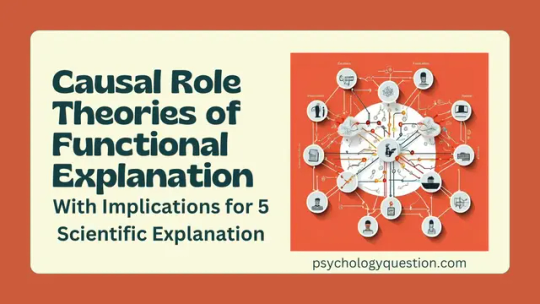
Causal Role Theories of Functional Explanation (CRTFE) are pivotal in the philosophical understanding of how functions are attributed within various systems, particularly in biology, psychology, and the social sciences. These theories seek to explain how components within a system contribute to the system's overall operation and purpose. This article delves deeply into CRTFE, exploring its foundations, applications, and implications for scientific explanation.
Understanding Causal Role Theories
Foundations of Causal Role Theories Causal Role Theories are rooted in the idea that the function of a component is defined by its role in contributing to a system's operation. This contrasts with etiological theories, which define function based on historical factors and evolutionary history. Key Concepts - Systemic Contribution: The primary focus is on how a component contributes to the functioning of a larger system. - Functional Ascription: This involves attributing a function to a component based on its causal role within the system. - Mechanistic Explanation: Functions are often explained through detailed descriptions of mechanisms. Historical Development The development of CRTFE can be traced back to philosophical discussions in the mid-20th century, with significant contributions from philosophers such as Robert Cummins and Larry Wright. Their work laid the groundwork for understanding functional explanations in terms of causal roles rather than historical or evolutionary contexts.
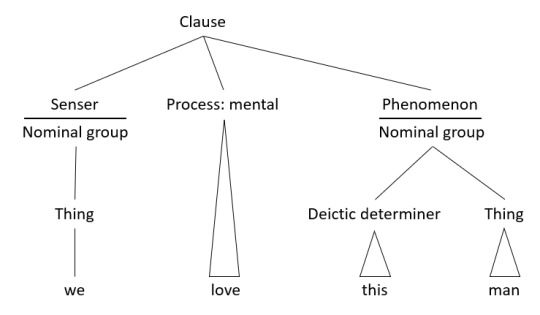
Fig: Causal Role Theories of Functional Explanation
Core Principles of Causal Role Theories of Functional Explanation
System and Subsystem Dynamics A fundamental principle of CRTFE is the analysis of systems and their subsystems. The function of any component is understood in the context of its contribution to the system's goals. Example: Biological Systems In biology, the function of the heart is to pump blood. This function is not defined by the heart's evolutionary history but by its role in circulating blood within the organism. Mechanistic Interactions Mechanistic explanations are crucial for CRTFE. This involves detailing the interactions and processes that enable a component to fulfill its role. Example: Neural Circuits In neuroscience, understanding the function of a neural circuit involves explaining how its components interact to produce specific behaviors or cognitive processes. Normativity and Functional Norms CRTFE also addresses normative aspects of functional explanation, considering how functions are supposed to be performed and what counts as proper functioning. Example: Engineering Systems In engineering, the function of a component is often defined by design specifications. A malfunctioning part fails to meet its functional norm.
Applications of Causal Role Theories of Functional Explanation
Biological Sciences CRTFE has extensive applications in biology, providing a framework for understanding the roles of genes, proteins, and organs within living organisms. Gene Function The function of a gene can be explained by its role in producing specific proteins that contribute to cellular processes. Psychology and Cognitive Science In psychology, CRTFE helps explain mental functions in terms of neural and cognitive processes. Memory Function The function of memory systems can be analyzed by examining how different brain regions interact to store and retrieve information. Social Sciences CRTFE is also applied in the social sciences to understand how social institutions and practices function within societies. Economic Systems The function of financial institutions can be explained by their role in regulating economic activities and facilitating trade.
Implications for Scientific Explanation for Causal Role Theories of Functional Explanation
Enhancing Explanatory Power CRTFE enhances the explanatory power of scientific theories by providing a detailed understanding of how components contribute to system functions. Example: Ecosystem Dynamics In ecology, explaining the function of a species involves understanding its role in the ecosystem, such as pollination or predation. Integrating Multidisciplinary Approaches CRTFE encourages the integration of different scientific disciplines, promoting a comprehensive understanding of complex systems. Example: Biomedical Research Biomedical research benefits from CRTFE by combining insights from genetics, physiology, and biochemistry to explain disease mechanisms. Addressing Reductionism CRTFE addresses the limitations of reductionist approaches by emphasizing the importance of understanding components within their systemic context. Example: Holistic Medicine In holistic medicine, health is viewed in terms of the functioning of the entire body, rather than isolated symptoms or organs.
Criticisms and Challenges of Causal Role Theories of Functional Explanation
Complexity of Systems One challenge for CRTFE is the complexity of biological, psychological, and social systems, which can make it difficult to identify and describe causal roles precisely. Example: Brain Function The human brain's complexity poses significant challenges for explaining mental functions purely in terms of the causal roles of neural circuits. Dynamic and Evolving Systems Systems are often dynamic and evolving, which can complicate the attribution of stable functions to components. Example: Ecosystem Changes Ecosystems change over time due to factors like climate change, which can alter the functions of species within them. Normative Issues Addressing normative issues, such as defining proper functioning and dysfunction, remains a complex aspect of CRTFE. Example: Health and Disease Defining what constitutes normal versus pathological functioning in medicine involves normative judgments that are not always clear-cut.
Future Directions of Causal Role Theories of Functional Explanation
Advancements in Computational Modeling Advancements in computational modeling and systems biology are likely to enhance CRTFE by providing tools for simulating and analyzing complex systems. Example: Simulating Neural Networks Computational models of neural networks can provide insights into how different brain regions interact to produce cognitive functions. Interdisciplinary Research Future research will likely continue to emphasize interdisciplinary approaches, integrating insights from various fields to enhance our understanding of functional explanations. Example: Integrative Medicine Integrative medicine, combining conventional and alternative therapies, benefits from CRTFE by providing a holistic view of health and disease. Ethical and Philosophical Considerations Addressing ethical and philosophical considerations, such as the implications of defining functions and norms, will remain an important aspect of CRTFE. Example: Genetic Engineering The ethical implications of genetic engineering involve questions about the intended functions of modified genes and their impact on organisms.
Conclusion
Causal Role Theories of Functional Explanation provide a robust framework for understanding how components within systems contribute to overall functions. By focusing on systemic contributions, mechanistic interactions, and normative aspects, CRTFE offers a comprehensive approach to scientific explanation. As interdisciplinary research and computational modeling advance, CRTFE will continue to play a crucial role in enhancing our understanding of complex biological, psychological, and social systems. Read the full article
0 notes
Text
this might just be me splitting hairs that dont necessarily need to be split? but i feel like "unaffected" might be a better term than "exempt" (wrt TMA/TME)
#feel free to ignore this#i understand the usecase im just postulating ideas#'exempt' feels too definite for how my brain thinks about it#this isnt even necessarily me saying what the lines are defining has to change#obviously like#people should just get educated about what the terms really mean#but i also feel like improvements to the terminology should be discussed#cause the less friction we have when explaining the better#like if your goal is to communicate ideas there are often better solutions than blaming the person that doesnt understand
4 notes
·
View notes
Text
Wireframe là gì? Cách thiết lập Wireframe hiệu quả 2024
Nắm rõ khái niệm Use Case là gì sẽ giúp các chuyên viên Business Analyst xác định chính xác nhu cầu của người dùng đối với sản phẩm của mình, từ đó đưa ra những giải pháp cải tiến hiệu quả nhất. Xem thêm: https://topchuyengia.vn/tu-van/use-case-la-gi
1 note
·
View note
Text
hey guys have you ever seen someone's discord avatar and been like "wow! I really love that! I wish I could react and reply to it!" well linger no further upon the threshold to the future my friend
4 notes
·
View notes
Note
⚣ lesbian : a lesbian that identifies / feels close /whatever to the ⚣ symbol. This flag is used by:
1. gaybians
2. achillean lesbians
3. multigender people
4. butch4butch lesbians
could you design a flag for it? i love making terms but i suck at flags.
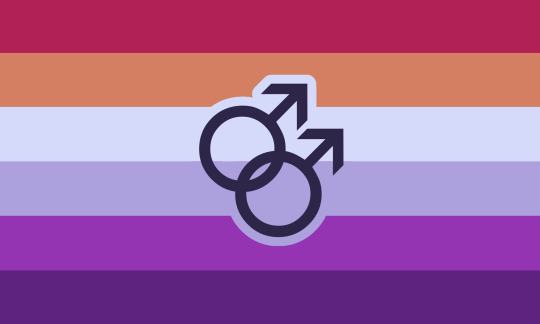

[Image ID: Two flags with 6 horizontal stripes and warm, saturated colors. The first has the colors pinkish red, orange, blueish white, lilac, purple, and dark purple. It has symbol in the centre of two interlocking male symbols. The second has the colors dark pink, pink, off white, blueish white, blueish purple, dark purple. /End ID]
⚣ lesbian and ⚢ turian/veldian flags! (i really wanted to complete the set lol)
#this is honestly the most relaxing request ive ever gotten#symbol ✔️#associated colors ✔️#usecases ✔️#name ✔️#⚣ lesbian#⚢ turian#⚢ veldian#suggest a label#mogai#microlabels#mogai coining#orientation
9 notes
·
View notes